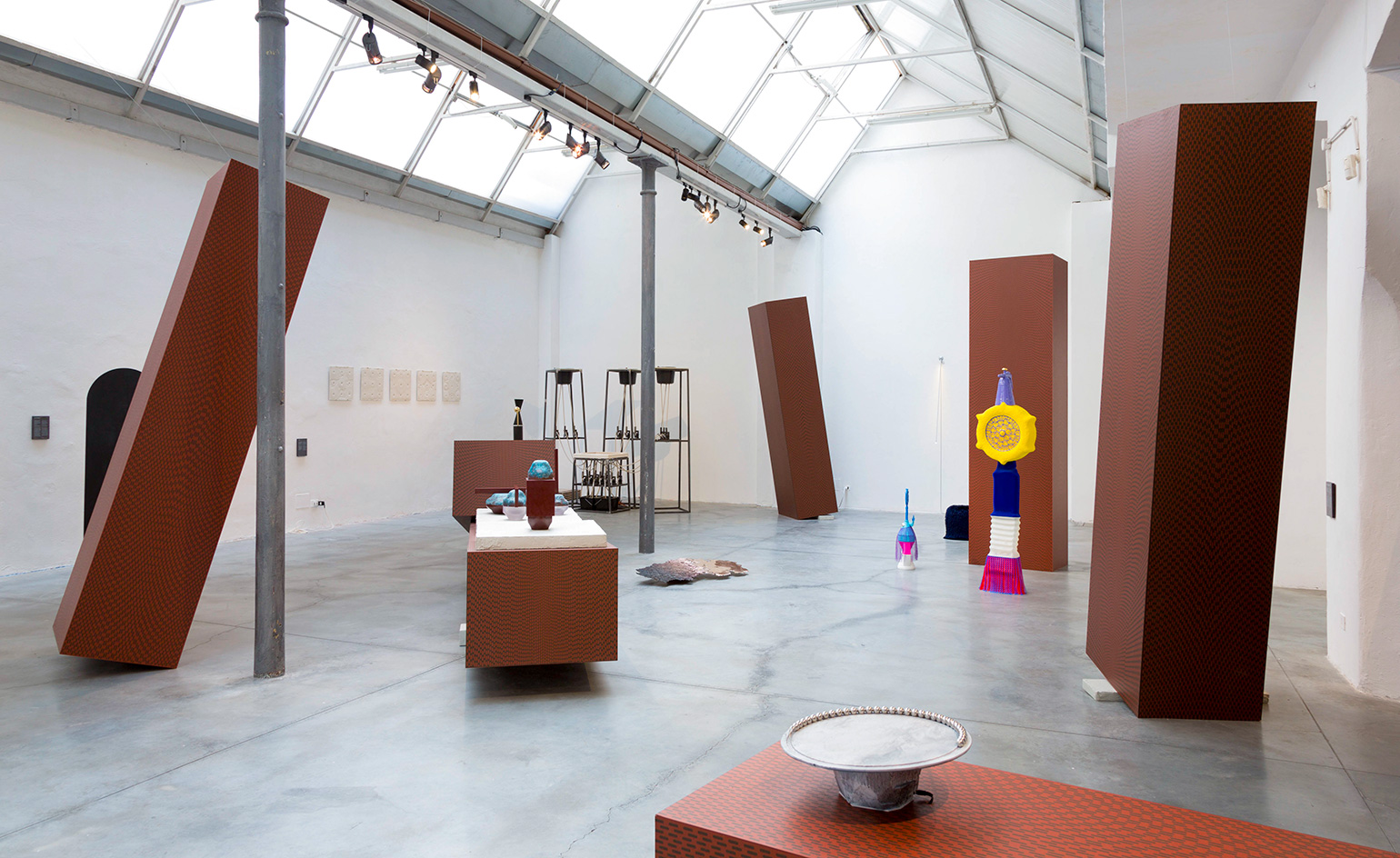
It takes time and space for ideas and design to breathe, and for observors to understand them. And this is the main reason why design collective Dutch Invertuals located themselves in the slightly remote Isola district, away from the noise and crowd of the Salone del Mobile, for their fifth presentation at the Milanese furniture fair.
Led by curator Wendy Plomp, who founded Dutch Invertuals six years ago, the collective has gained a reputation for influential and experimental design. It has grown into a network of 44 designers and has realised over 100 projects on 14 themes; each theme being presented at Milan’s Salone or Dutch Design Week in Eindhoven.
The exhibition is the product of an open discussion among creative professionals, largely coming from Design Academy Eindhoven, ‘What I notice is that a lot of designers don’t want to be superstars any more; they don’t want to be famous. They like to team up, work together, open their sketchbooks and discuss with other designers,’ says Plomp. The group gathers for bi-weekly meetings in Eindhoven, ‘it is necessary to work in this way, to push design to a new direction, to create total new objects, or new in a way of thinking,’ she adds.
Titled ‘Advanced Relics’, the exhibition reflects on the significance of physicality in today’s increasingly digital and virtual world, and how creativities and aesthetics fit into this. Leaving behind the ‘old world’, it explores new rituals and ways of finding comfort, presenting a collection of ‘contemporary relics’.
The exhibition showcased works by nine studios. In addition to works by Bastiaan de Nennie, Carlo Lorenzetti, Daniel de Bruin, Martina Lasinger and Nel Verbeke, is 'The Synthesis Monolith' by Chinese designer Hongjie Yang, a group of aluminium sculptures showing the transition between its natural stage and the intervention of humans and machines; Australian Studio Truly Truly’s Abide Vessels made of copper-infused resin invites visitors to perform an imagined ceremonial action; Dutch designer Tijmen Smeulders’s hanging Antenna looks into the behaviour of human interaction with light, resulting in a sleek aluminum, tube-shaped light sculpture; and The Ceramic Symphonies installation created by Dutch Studio Edhv, which uses gravity and evaporation to capture natural aesthetics onto unique ceramic plates.
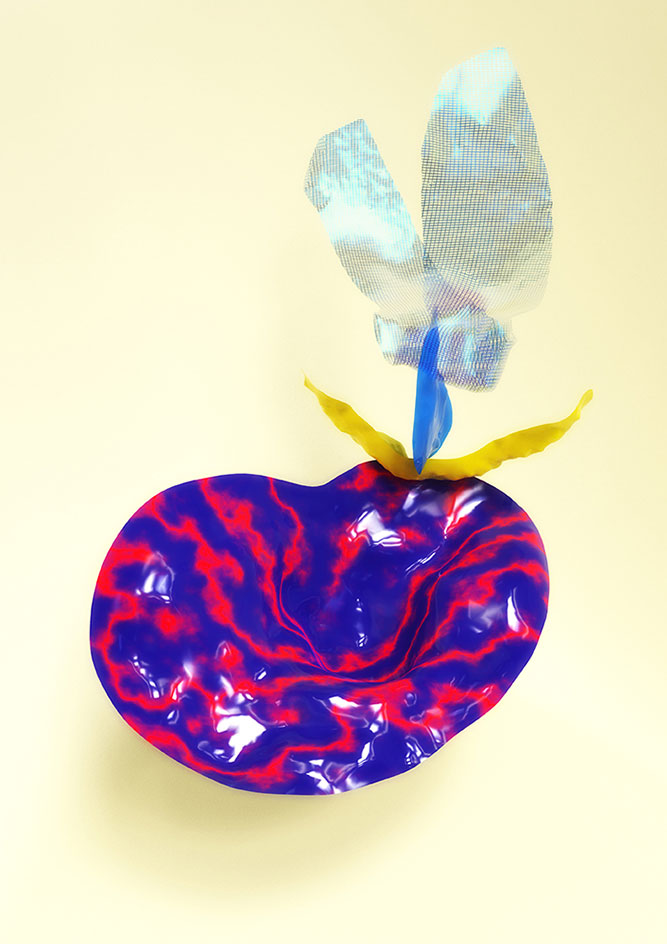
Dutch designer Bastiaan de Nennie used various 3D-scan techniques to digitalise materials and objects as modelling elements to create portraits of his fellow designers in the show, which were printed as postcards
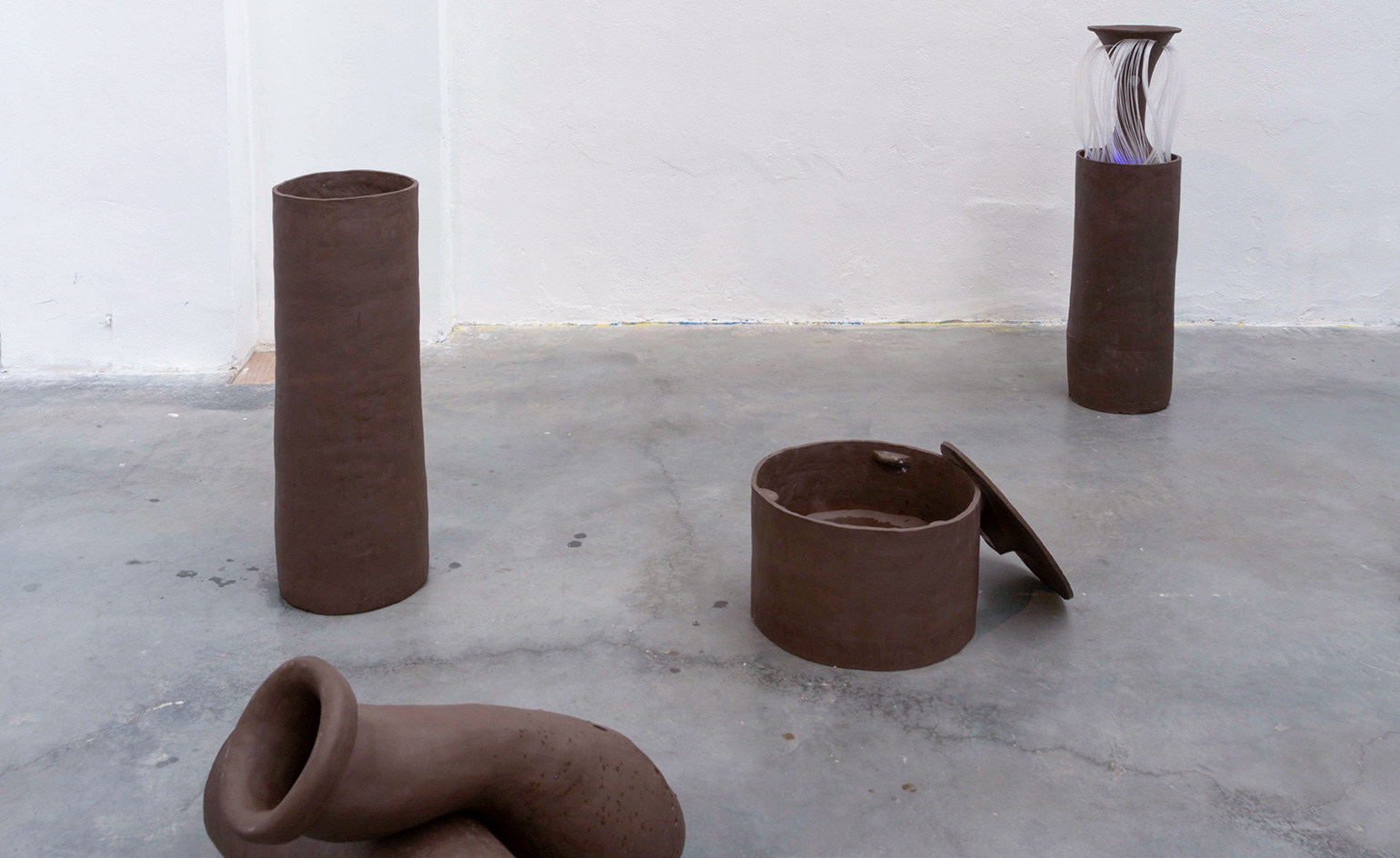
'Omnipotence Of Thought' by American designer Carlo Lorenzetti, a group of clay objects (pictured) to connect human to nature physically and emotionally
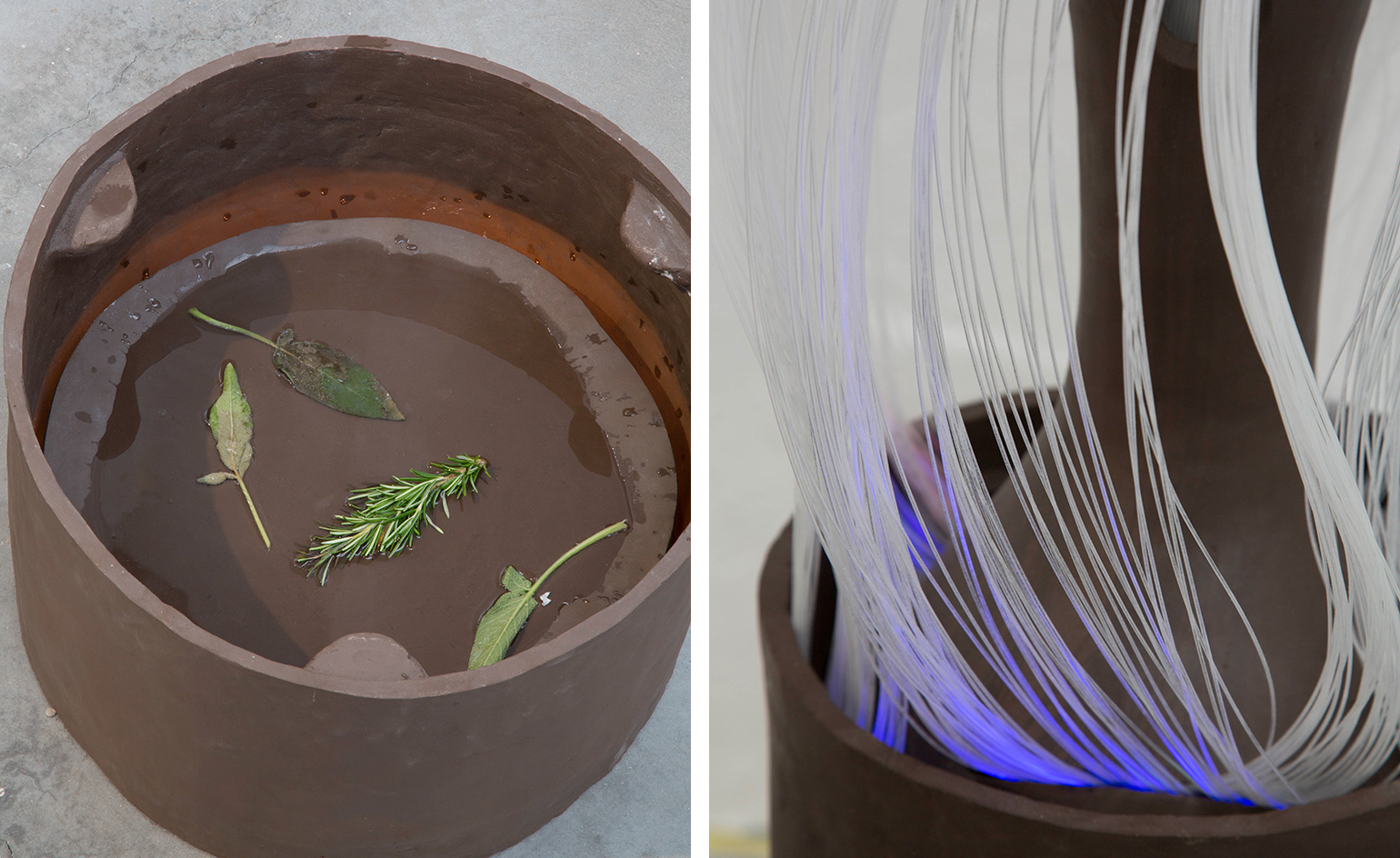
Pictured: detail of Carlo Lorenzetti's clay objects
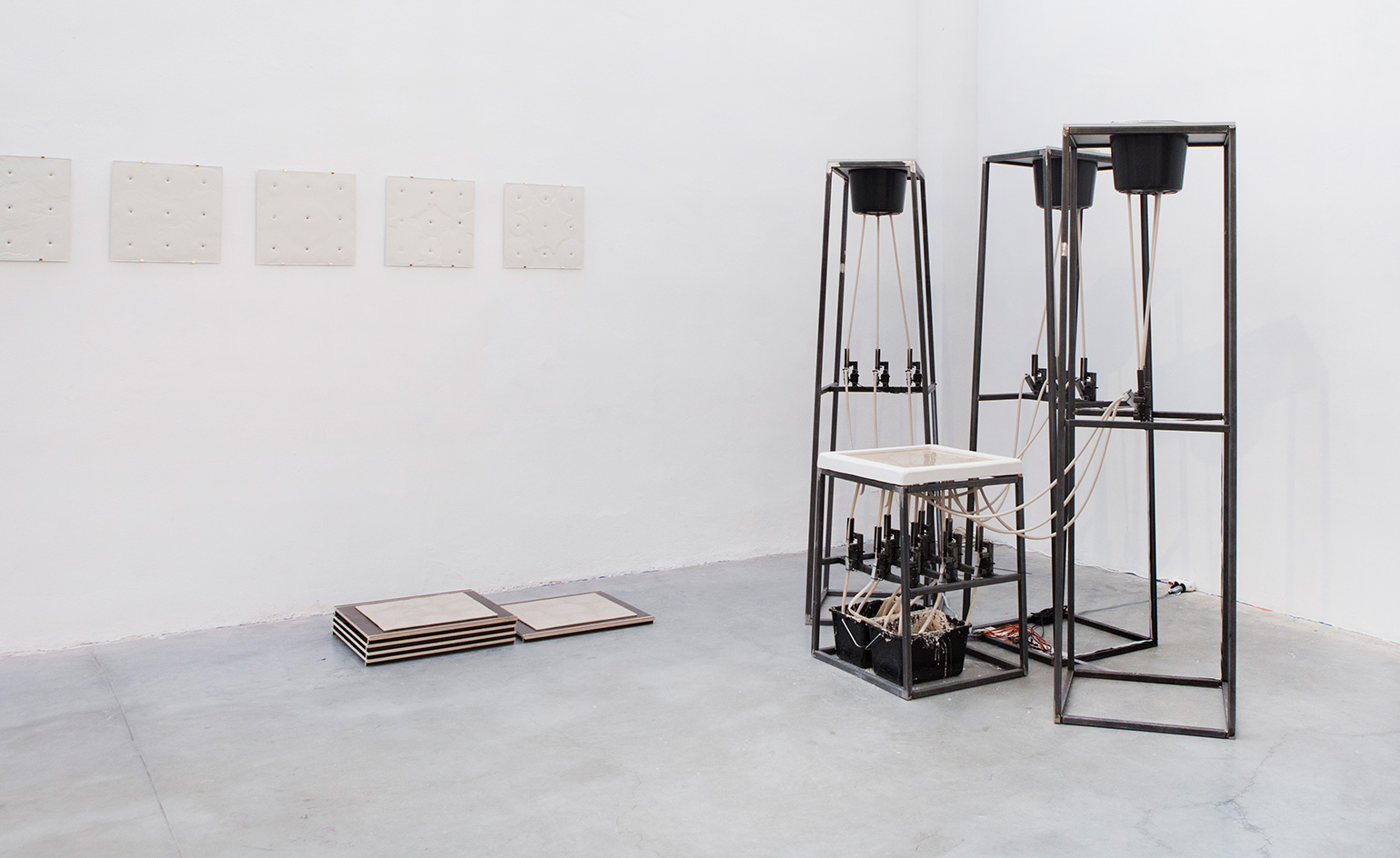
'The Ceramic Symphonies' installation (pictured) created by Studio Edhv uses gravity and evaporation to capture natural aesthetics onto unique ceramic plates
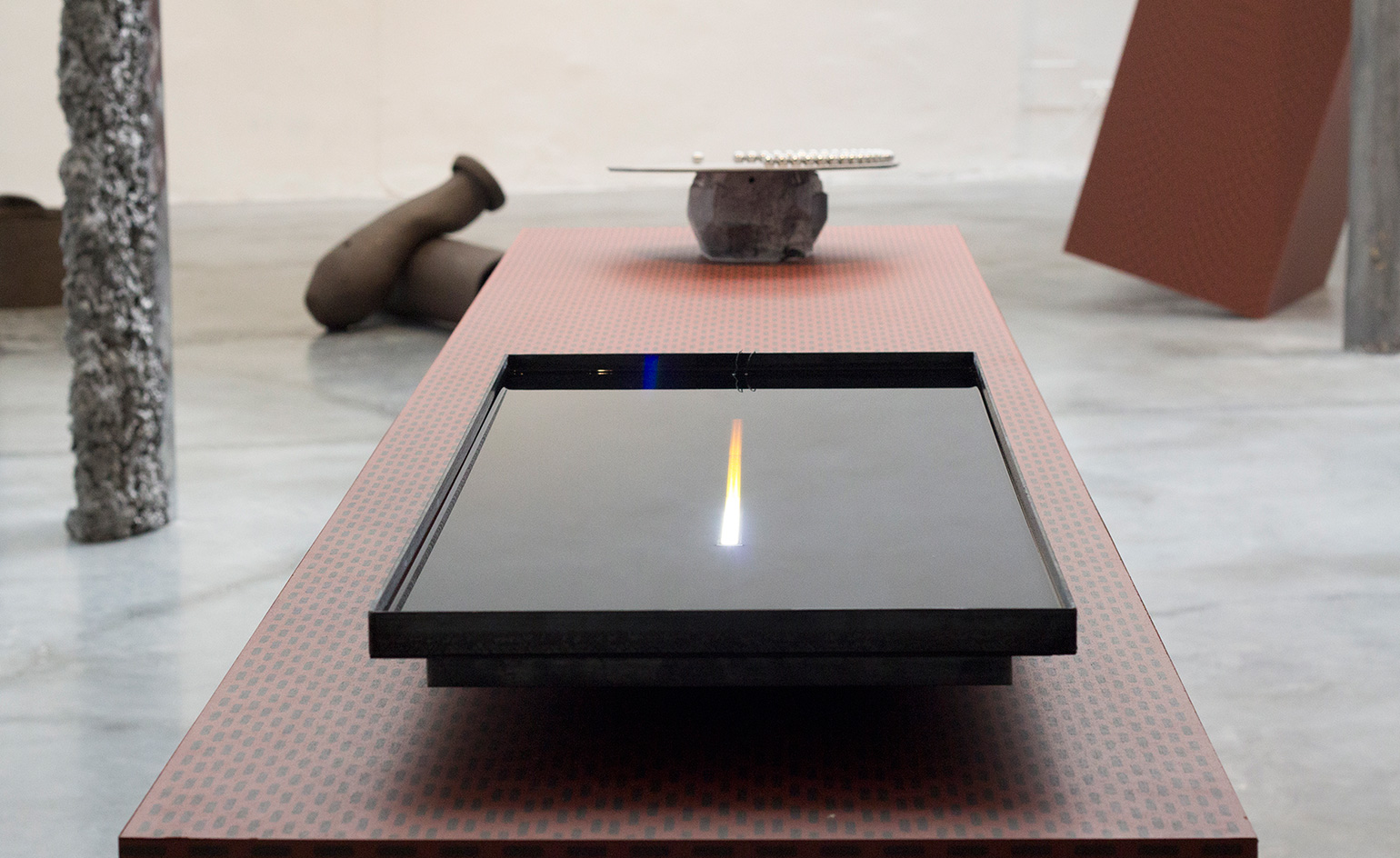
'Fosfeen' (pictured) by Dutch visual artist and designer Daniel de Bruin: ‘I have always been fascinated with the sun, the ultimate relic of our time. My work tries to invoke the delicate balance between its beautiful light and blinding brightness’
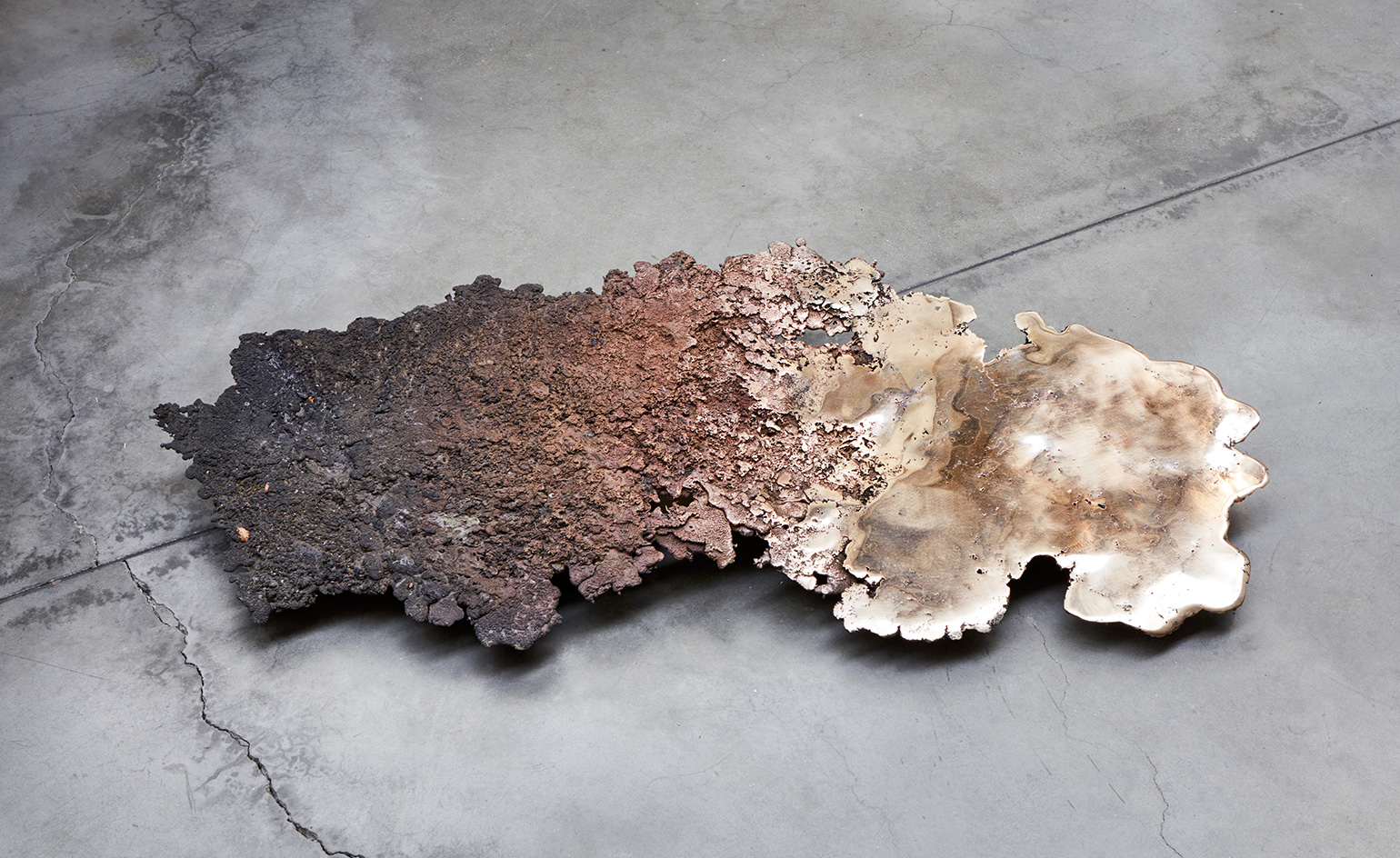
The Synthesis Monolith by Chinese designer Hongjie Yang, a group of aluminium sculptures showing the transition between its natural stage and the intervention of humans and machines
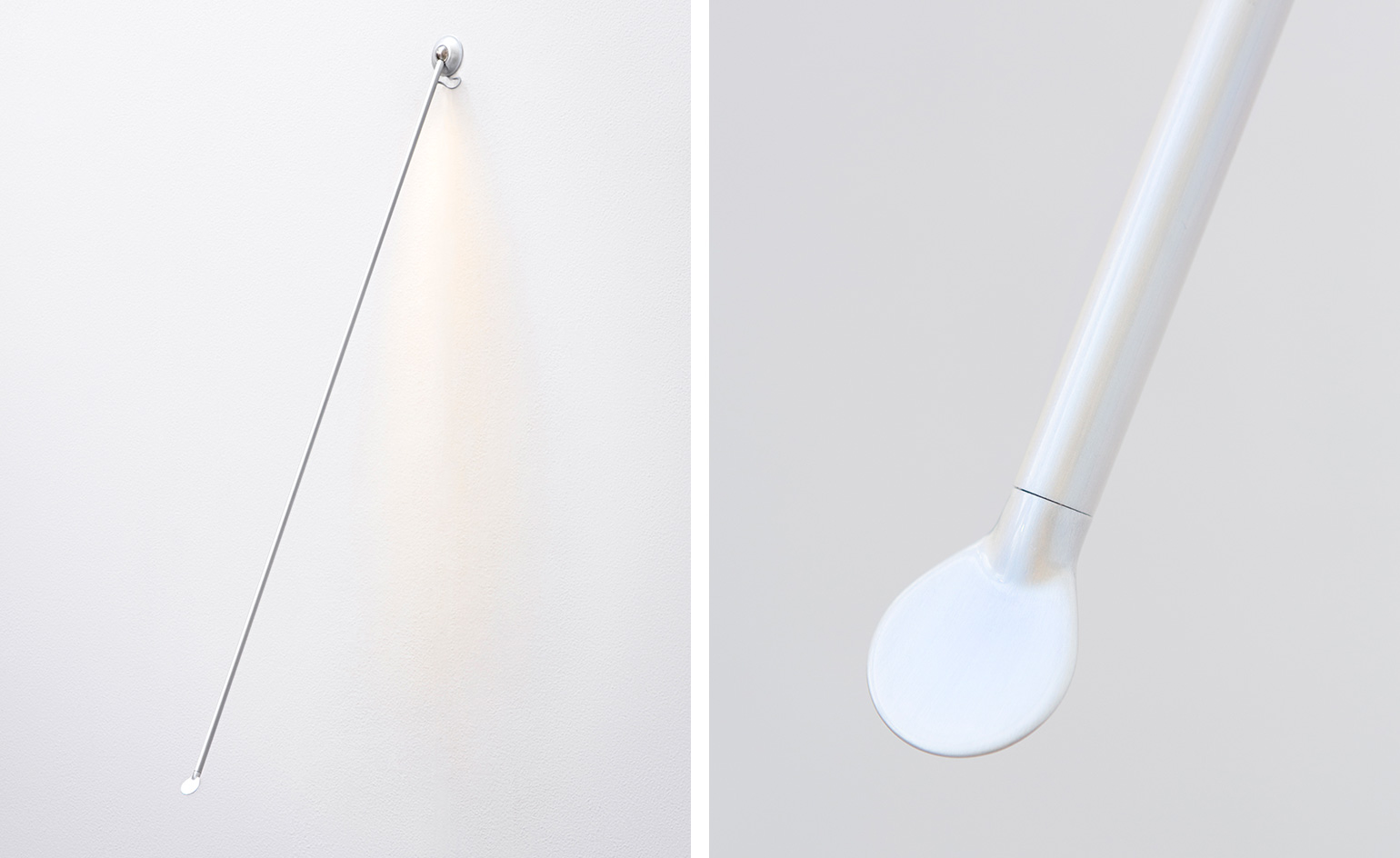
Dutch designer Tijmen Smeulders’s hanging 'Antenna' (pictured) looks into the behaviour of human interaction with light, resulting in a sleek aluminum, tube-shaped light sculpture
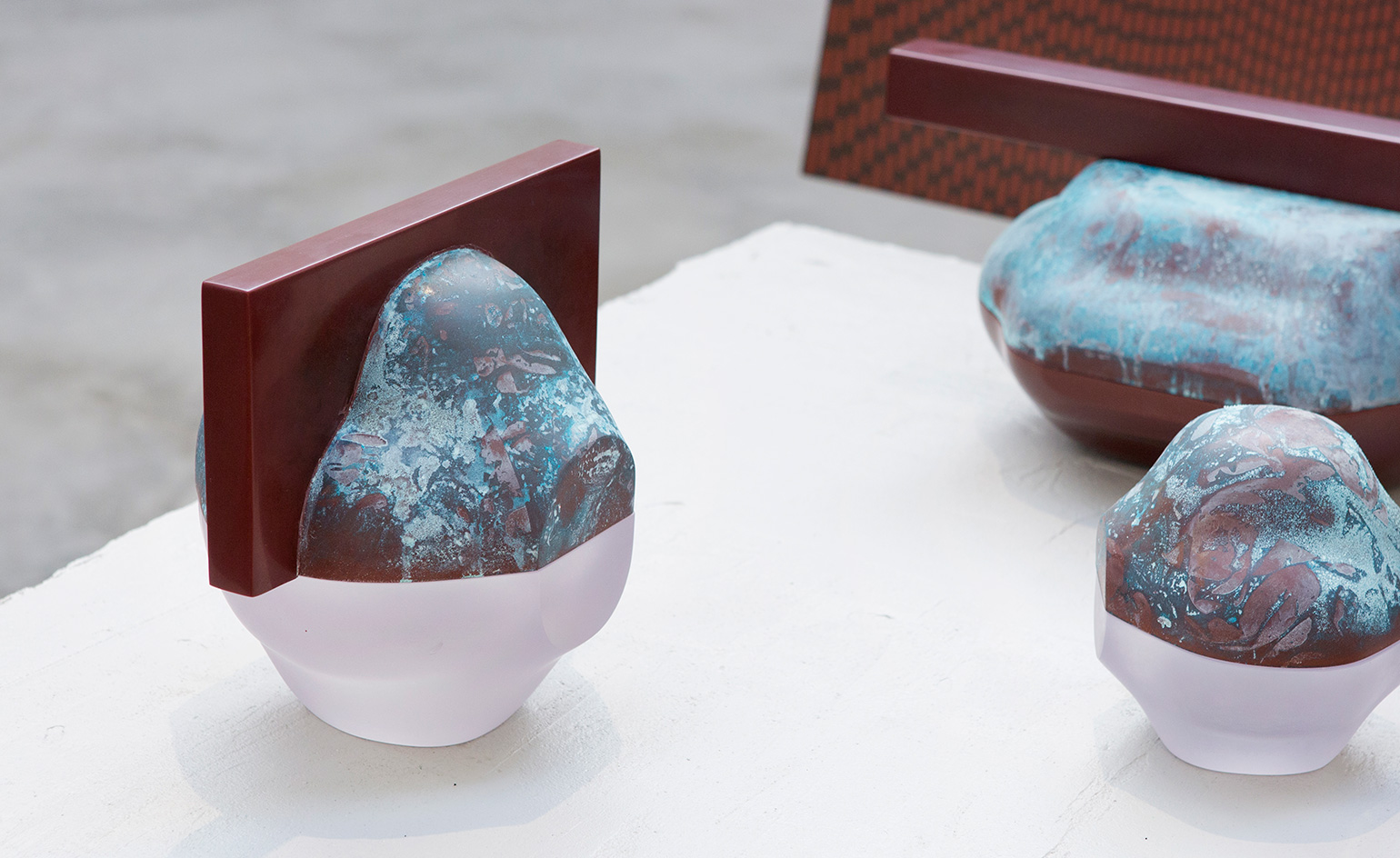
Australian Studio Truly Truly’s 'Abide Vessels' (pictured) made of copper-infused resin invites visitors to perform an imagined ceremonial action
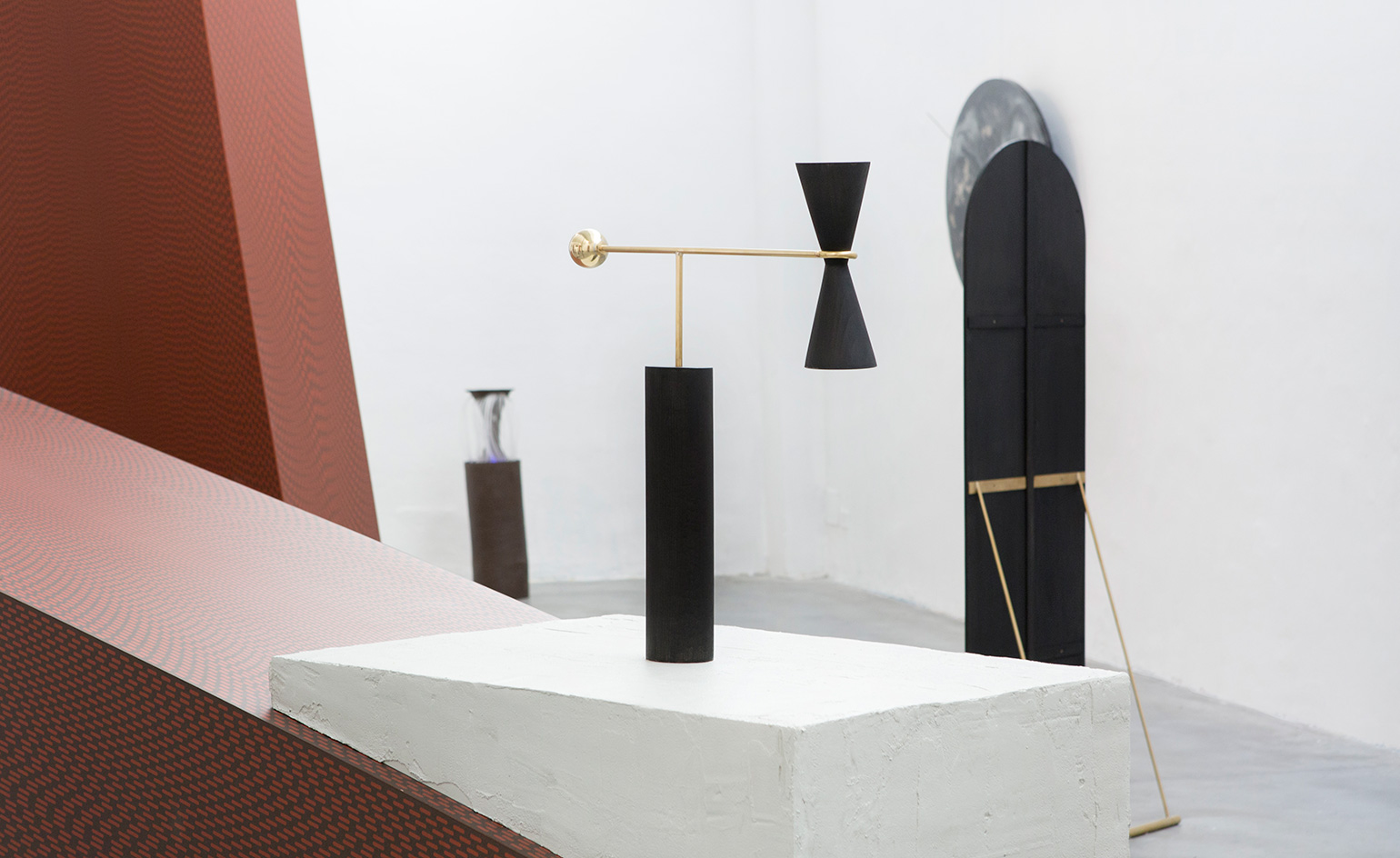
Belgian designer Nel Verbeke dives into the melancholic nature of relics, a group of three objects including a clock with a charcoal dial that diminishes with the flow of time
INFORMATION
For more information, visit the Dutch Invertuals website
Photography: Ruy Teixeira
Receive our daily digest of inspiration, escapism and design stories from around the world direct to your inbox.
Yoko Choy is the China editor at Wallpaper* magazine, where she has contributed for over a decade. Her work has also been featured in numerous Chinese and international publications. As a creative and communications consultant, Yoko has worked with renowned institutions such as Art Basel and Beijing Design Week, as well as brands such as Hermès and Assouline. With dual bases in Hong Kong and Amsterdam, Yoko is an active participant in design awards judging panels and conferences, where she shares her mission of promoting cross-cultural exchange and translating insights from both the Eastern and Western worlds into a common creative language. Yoko is currently working on several exciting projects, including a sustainable lifestyle concept and a book on Chinese contemporary design.
-
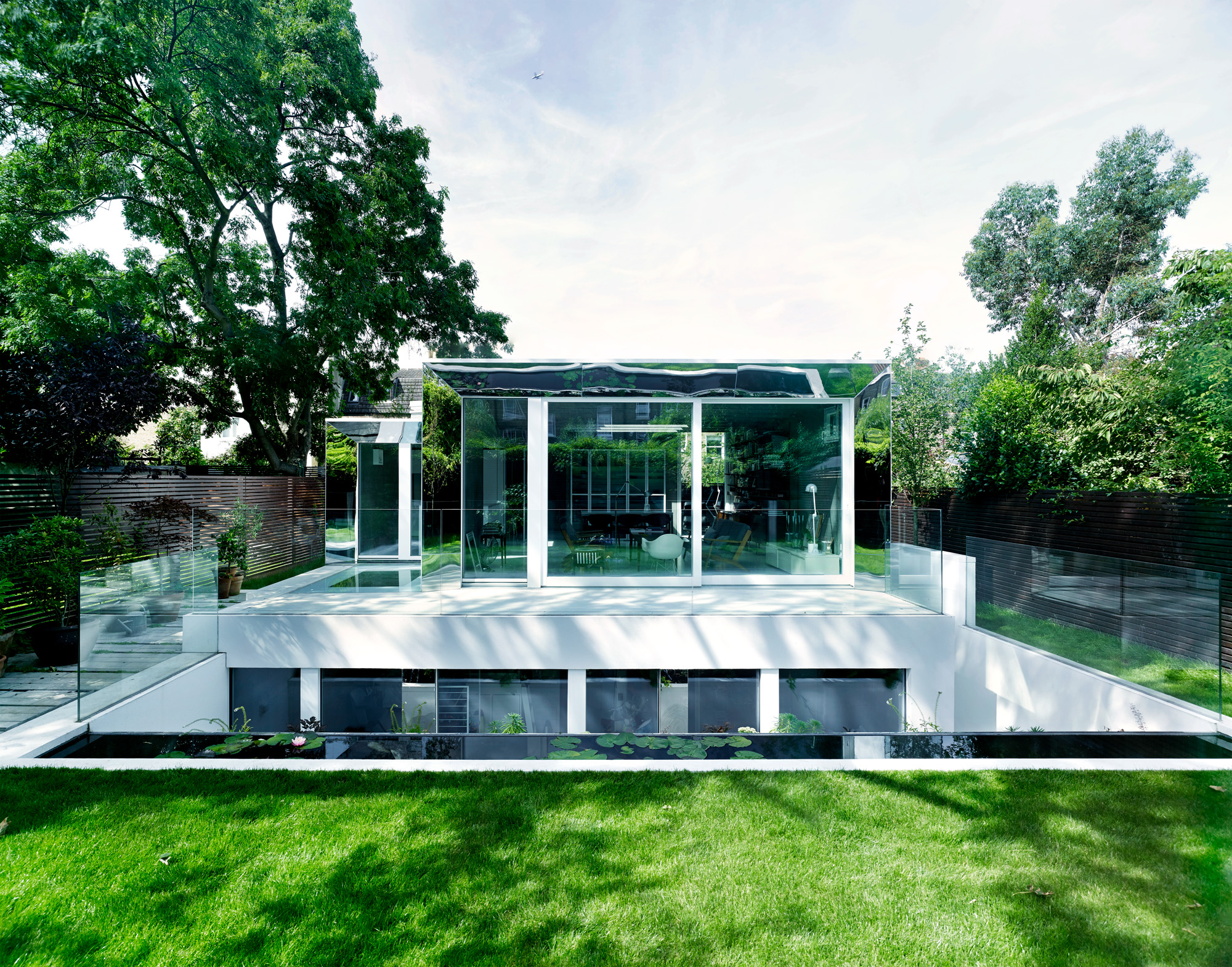 This modern Clapham house is nestled indulgently into its garden
This modern Clapham house is nestled indulgently into its gardenA Clapham house keeps a low profile in South London, at once merging with its environment and making a bold, modern statement; we revisit a story from the Wallpaper* archives
-
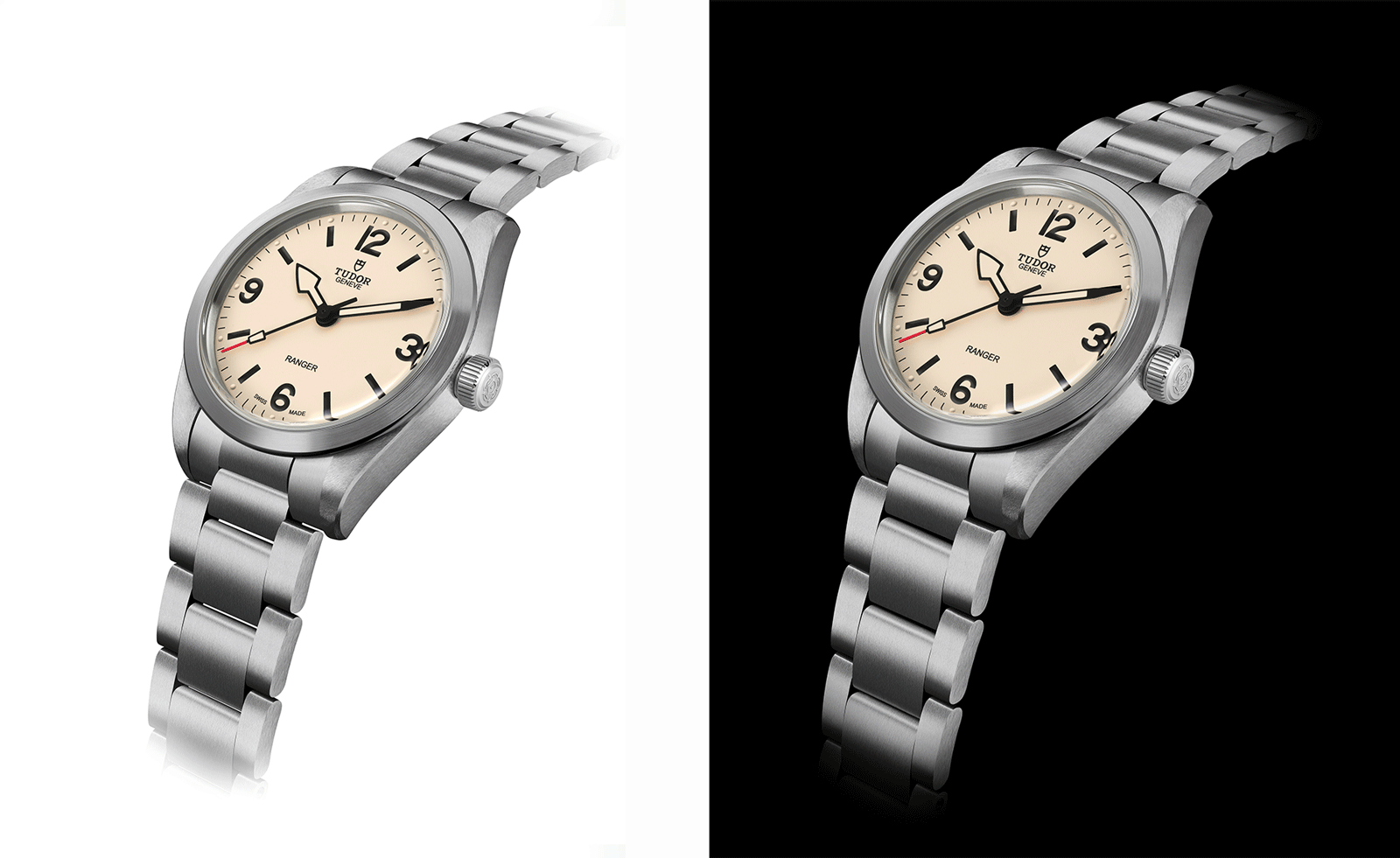 The new Tudor Ranger watches master perfectly executed simplicity
The new Tudor Ranger watches master perfectly executed simplicityThe Tudor Ranger watches look back to the 1960s for a clean and legible design
-
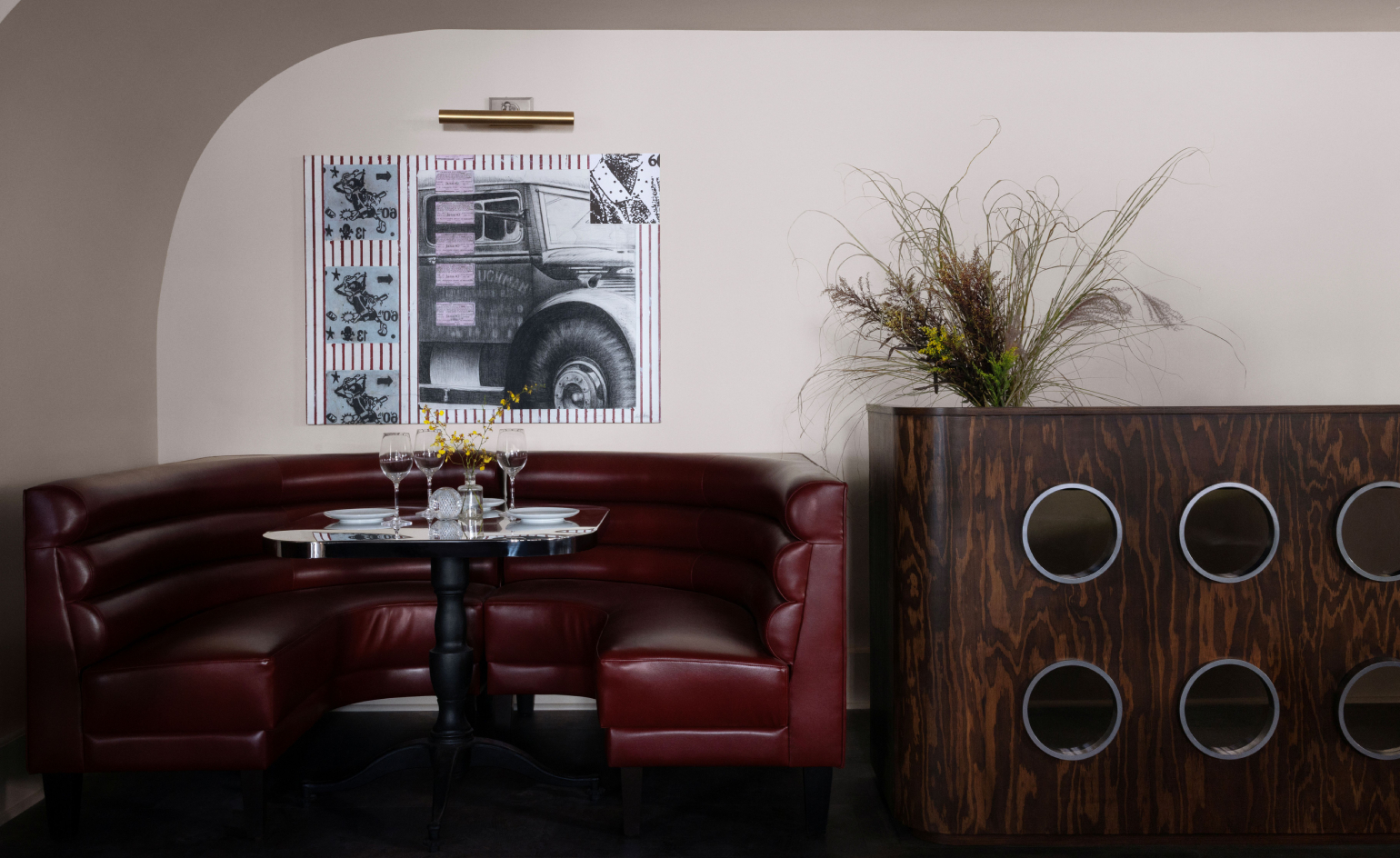 This late-night hangout brings back 1970s glam to LA’s Sunset Boulevard
This late-night hangout brings back 1970s glam to LA’s Sunset BoulevardGalerie On Sunset is primed for strong drinks, shared plates, live music, and long nights
-
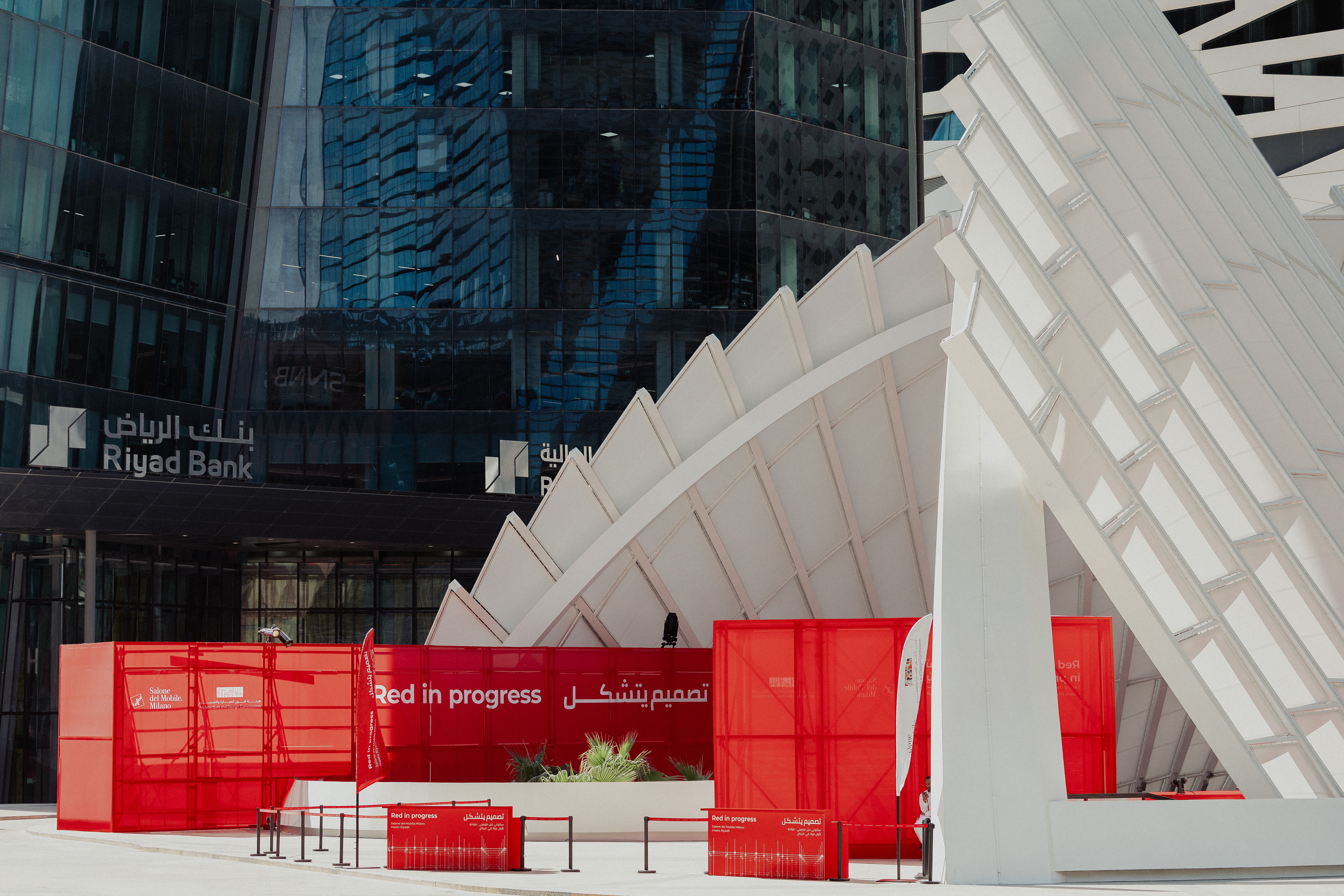 ‘Locally anchored and globally conversant’: Salone del Mobile debuts in Saudi Arabia
‘Locally anchored and globally conversant’: Salone del Mobile debuts in Saudi ArabiaSalone del Mobile lands in Riyadh (26-28 November 2025), bringing its creative and manufacturing know-how to one of the world’s fastest-growing markets and setting the stage for Italo-Saudi design relations
-
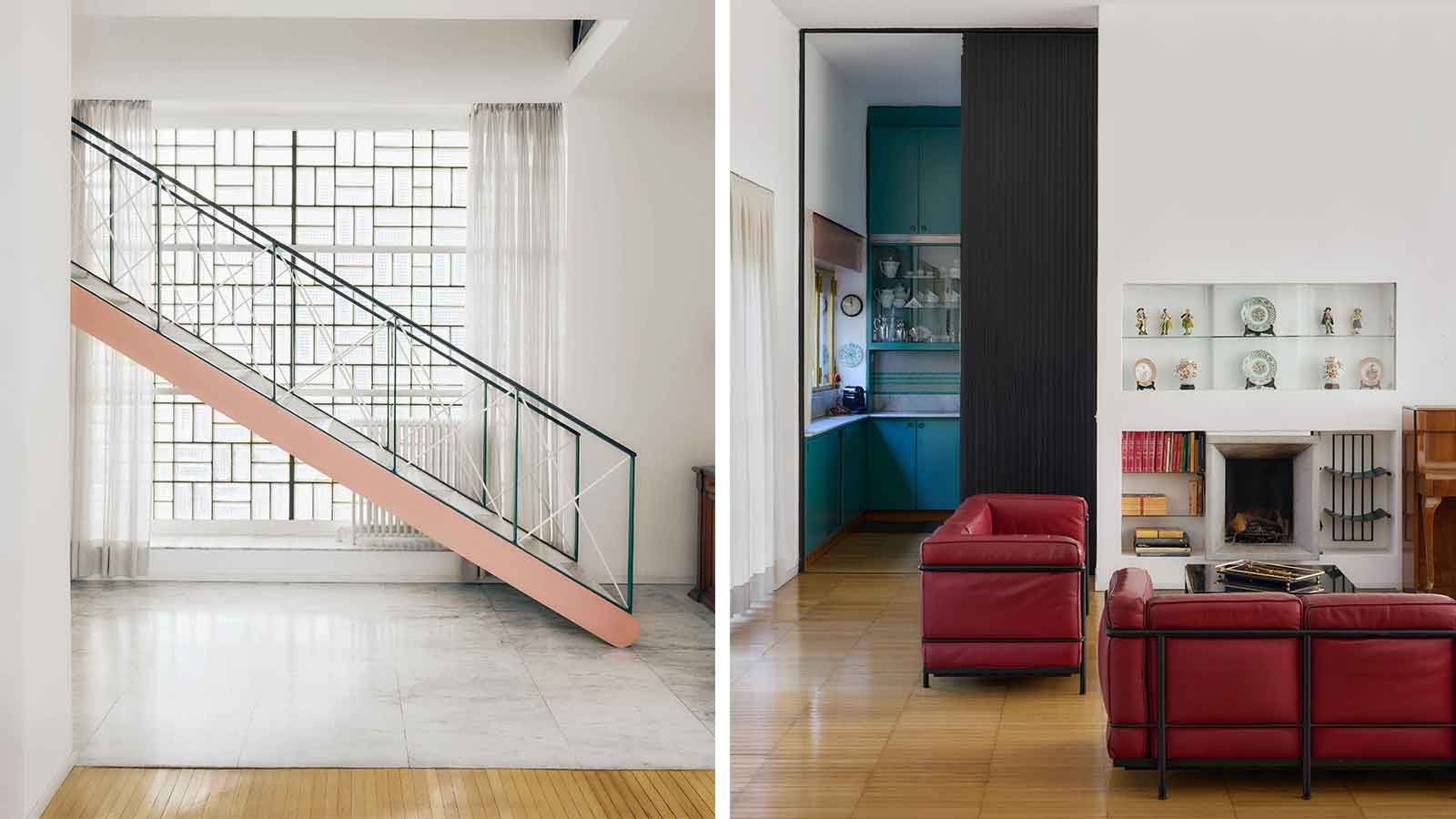 Alcova 2026 locations include a Rationalist gem and an abandoned church
Alcova 2026 locations include a Rationalist gem and an abandoned churchAlcova returns for an 11th edition in 2026 (20-26 April), once again opening up two exclusive Milanese locations, the Baggio Military Hospital and Franco Albini's Villa Pestarini
-
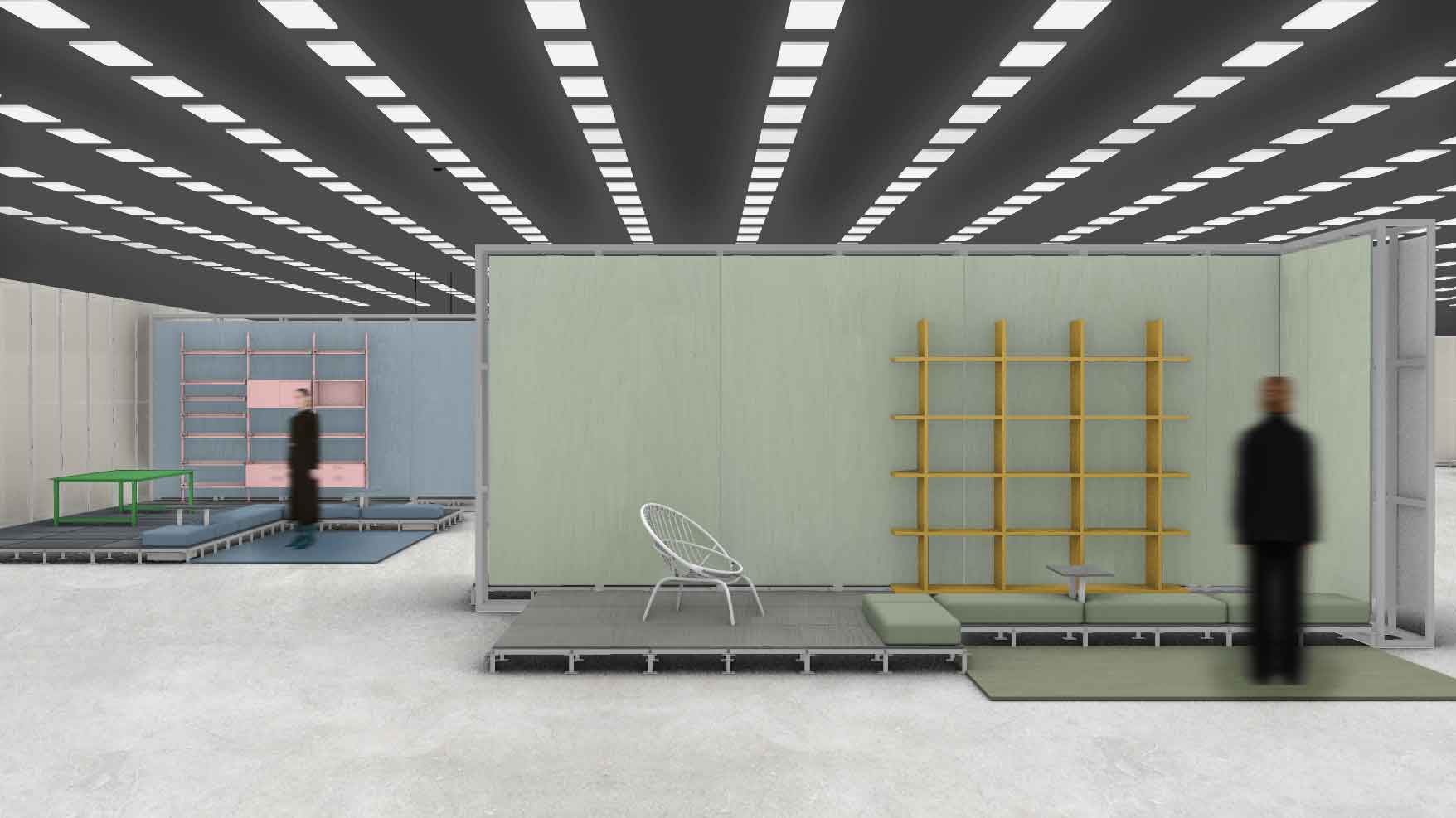 Salone del Mobile 2026 will embrace collectible design with Salone Raritas
Salone del Mobile 2026 will embrace collectible design with Salone RaritasSalone del Mobile has Salone Raritas, a new exhibition space at the fair (21-26 April 2026), curated by Annalisa Rosso and designed by Formafantasma
-
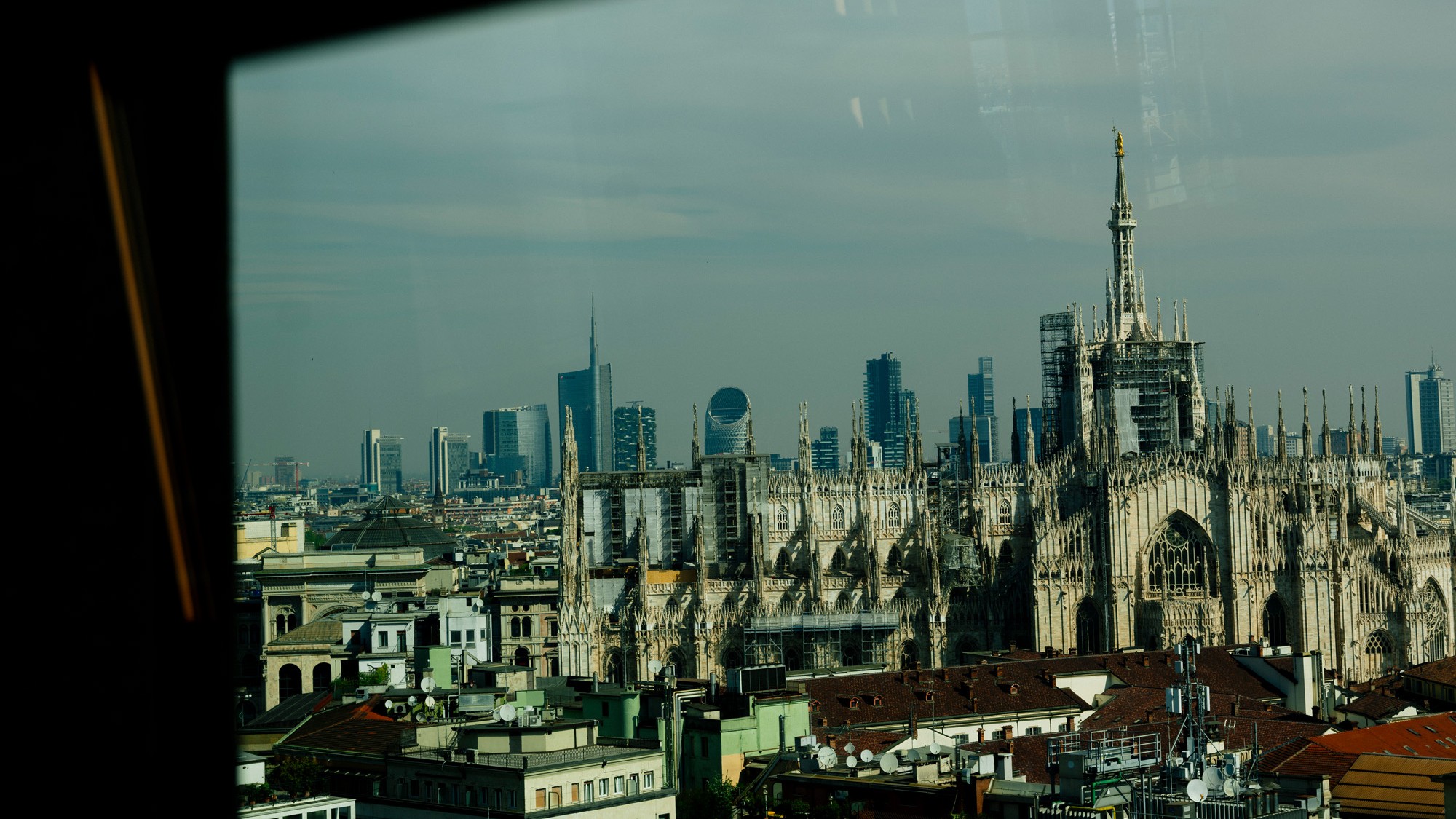 O Milano! Design's epic annual spectacle in photos
O Milano! Design's epic annual spectacle in photosCall us biased, but we believe that Milan Design Week is, at this moment in time, the greatest show on earth
-
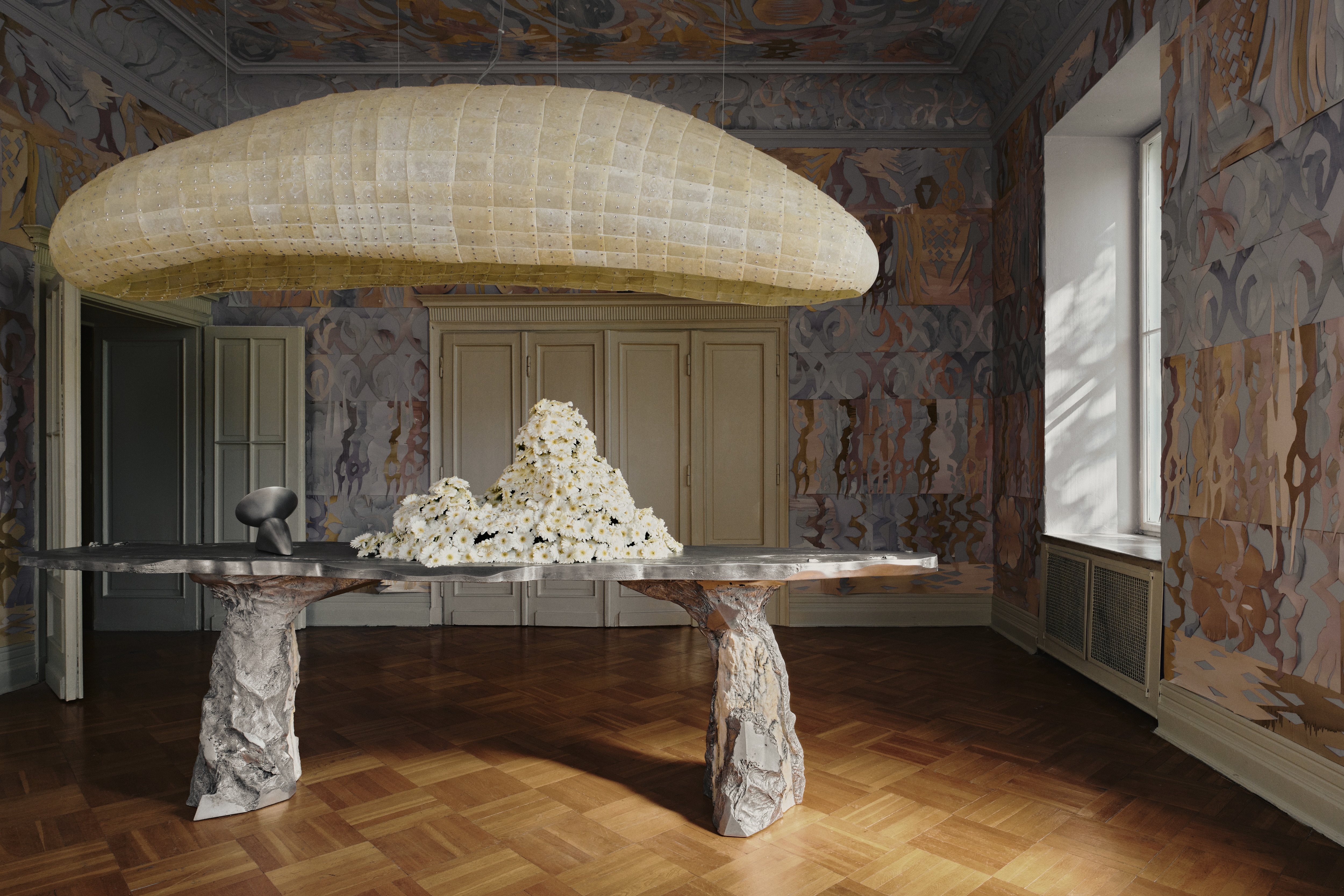 ‘Romantic brutalism’ rethinks Polish craft
‘Romantic brutalism’ rethinks Polish craftAn exhibition in Warsaw gives local makers their due, looking inside the burgeoning world of Polish design
-
 Eight designers to know from Rossana Orlandi Gallery’s Milan Design Week 2025 exhibition
Eight designers to know from Rossana Orlandi Gallery’s Milan Design Week 2025 exhibitionWallpaper’s highlights from the mega-exhibition at Rossana Orlandi Gallery include some of the most compelling names in design today
-
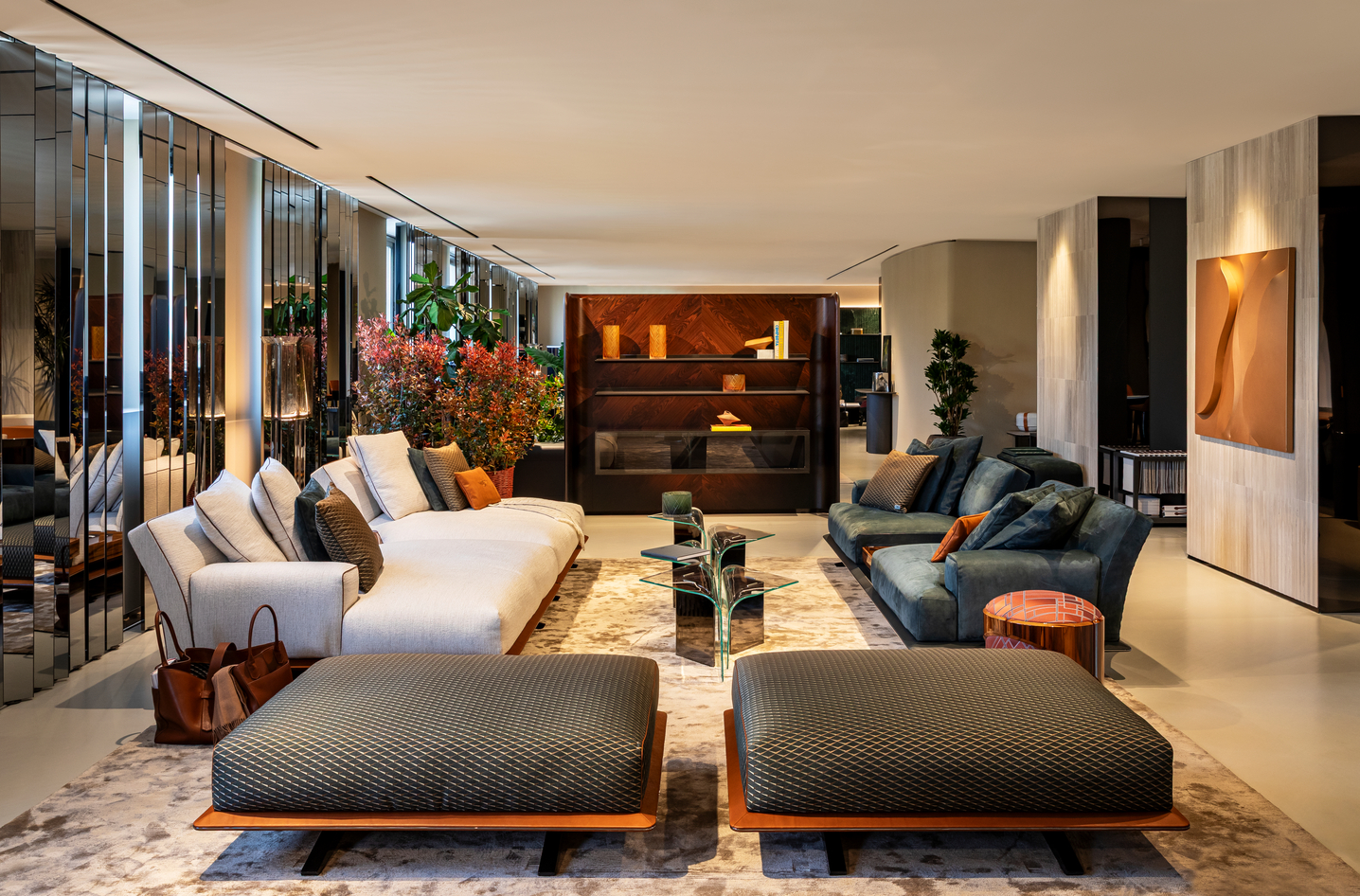 Bentley’s new home collections bring the ‘potency’ of its cars to Milan Design Week
Bentley’s new home collections bring the ‘potency’ of its cars to Milan Design WeekNew furniture, accessories and picnic pieces from Bentley Home take cues from the bold lines and smooth curves of Bentley Motors
-
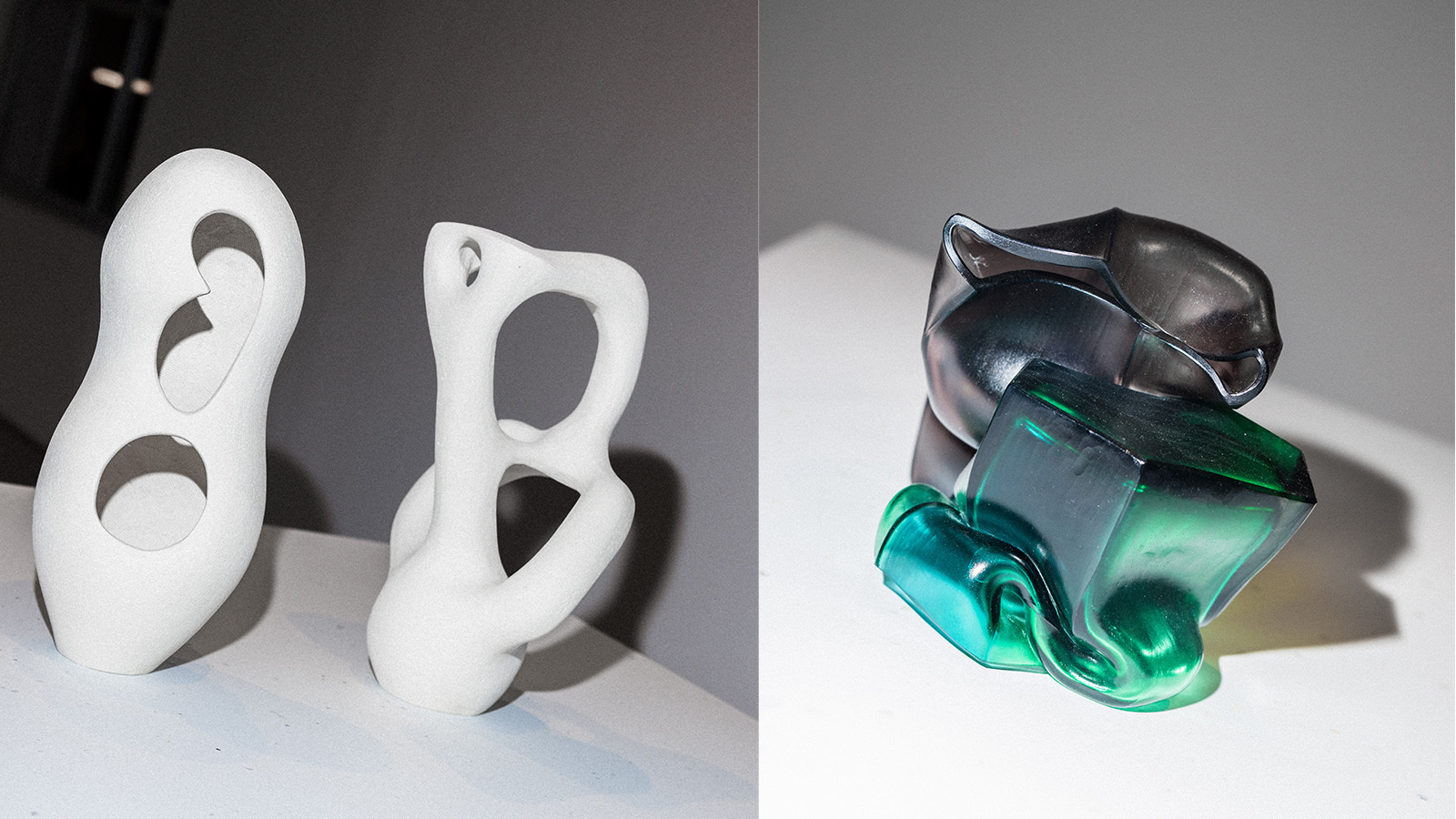 StoneX partners with Wallpaper* for material alchemy at Milan Design Week and beyond
StoneX partners with Wallpaper* for material alchemy at Milan Design Week and beyondThe natural stone purveyor teams up with Wallpaper* for a three-year partnership of material adventures, starting with an exhibition at Triennale di Milano